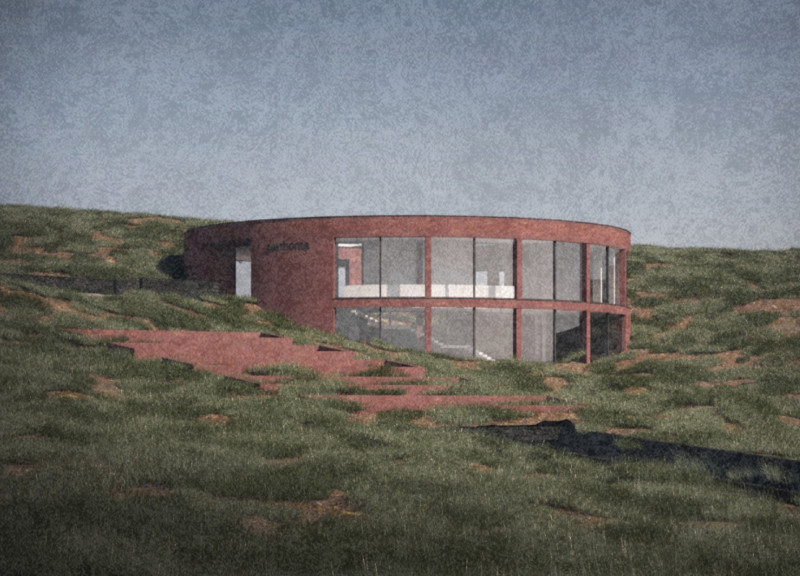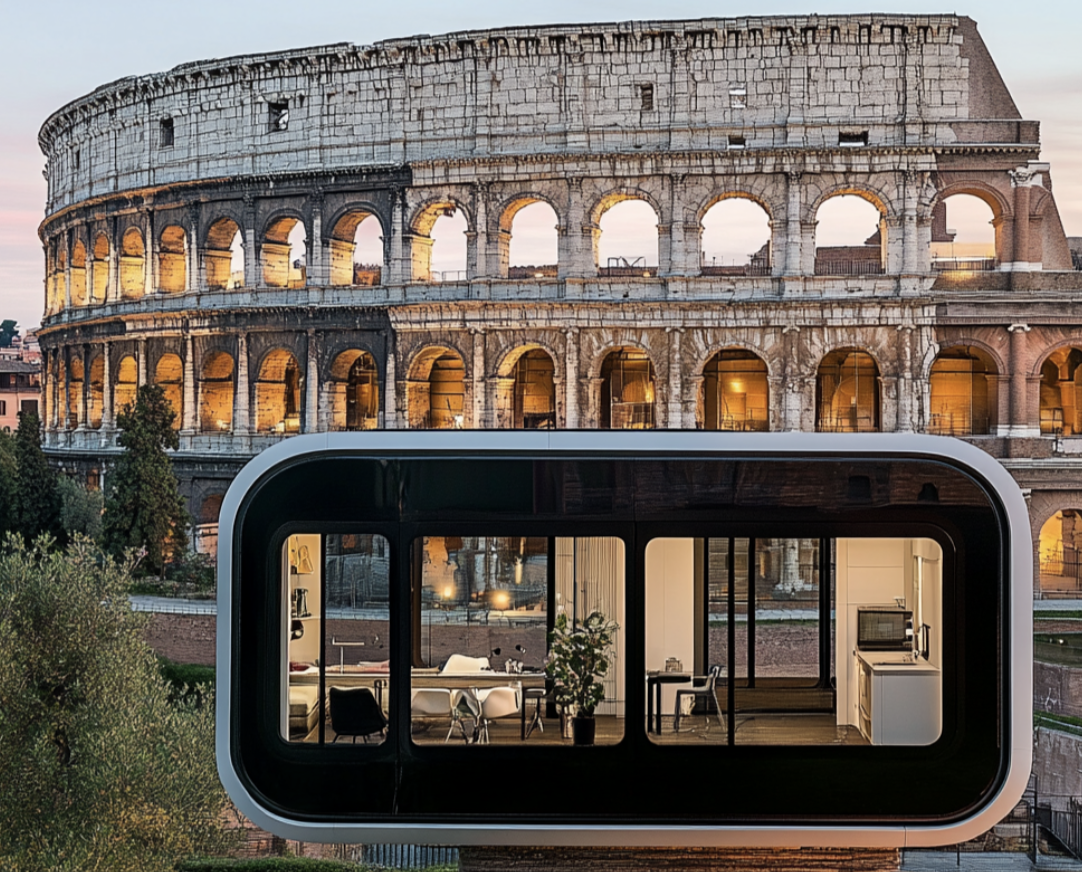5 key facts about this project
The Uroboros community house is an architectural project located in the northern part of Iceland, near Lake Mývatn. This design represents a synthesis of community engagement and sustainable practices. The structure's circular form facilitates social interaction, serving as a multifunctional space dedicated to various community activities. Its thoughtful design incorporates local materials, minimizing its environmental footprint while enhancing the context of the volcanic landscape.
Unique Design Approach and Sustainability
The Uroboros exemplifies a unique architectural approach through its use of local volcanic rock as the primary façade material. This choice not only grounds the building within its geographic context but also reflects the natural characteristics of the surrounding environment. The structure is primarily constructed from prefabricated reinforced concrete, offering durability and efficiency in the building process. The integration of a recycling and resource management area within the design encourages sustainable practices among users, allowing for organic waste collection that supports local agriculture.
The internal organization of the community house prioritizes flexibility and community connection. The multipurpose meeting room acts as the central hub, while dedicated spaces for children, tourists, and library functionalities cater to diverse user needs. This configuration fosters a sense of belonging and encourages community interaction.
Architectural Details and Functionality
Architectural details in Uroboros contribute significantly to the overall functionality of the project. Large windows provide ample natural light, complementing the aesthetic and reducing reliance on artificial lighting. Skylights further enhance the interior environment, supporting the building's ecological mission. The design emphasizes openness and connectivity, allowing seamless movement between spaces.
Additionally, the incorporation of a greenhouse and areas for resource collection reflects an innovative approach to involving the community in sustainability initiatives. The architecture encourages the use of renewable resources and promotes education around environmental stewardship. This blending of communal and educational elements positions Uroboros as a model for future sustainable designs.
For more detailed insights into the Uroboros community house, including architectural plans, sections, and design ideas, interested readers are encouraged to explore the project's presentation further. Enhanced understanding of the architectural strategies employed can provide valuable perspectives on community-driven sustainable architecture.





















